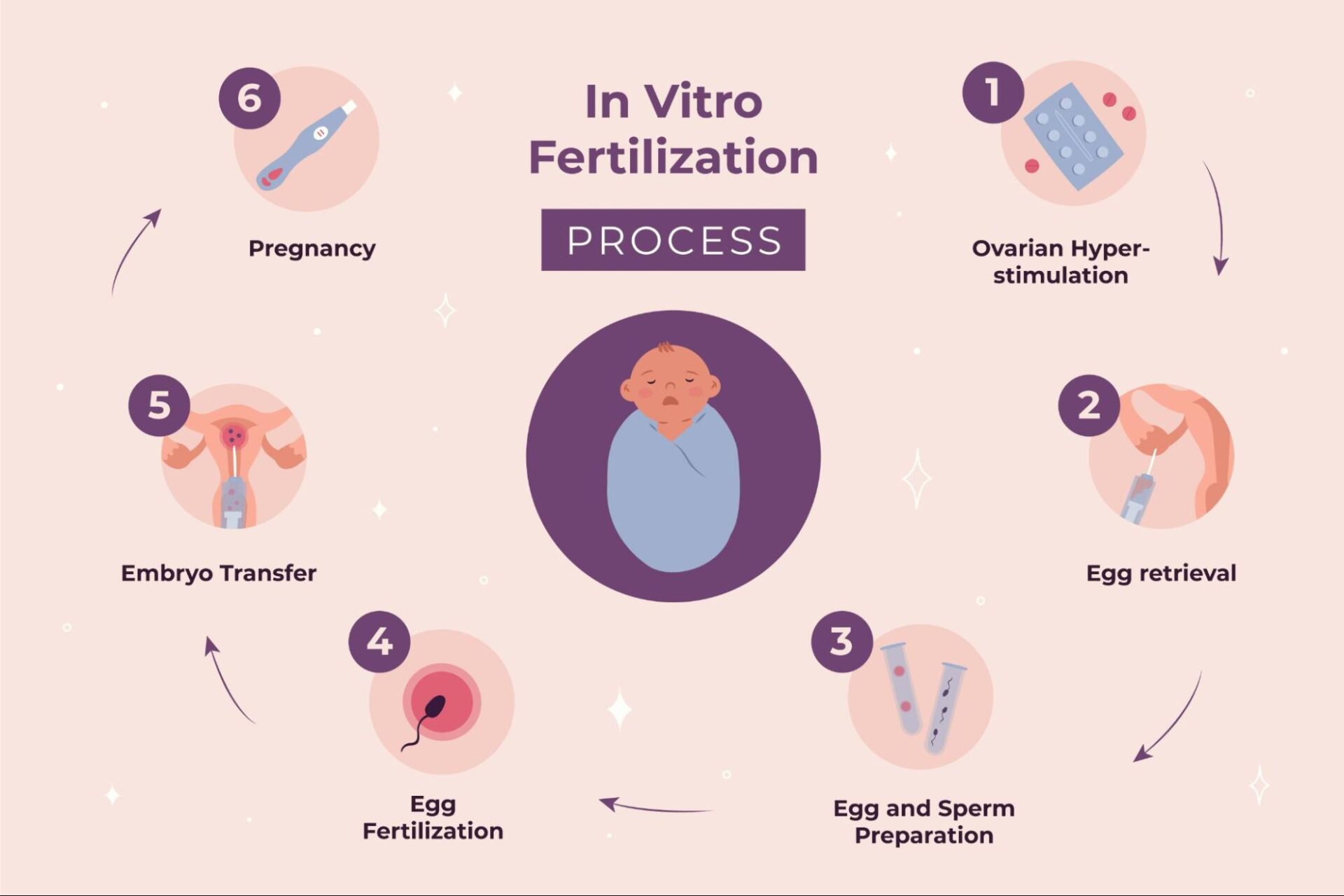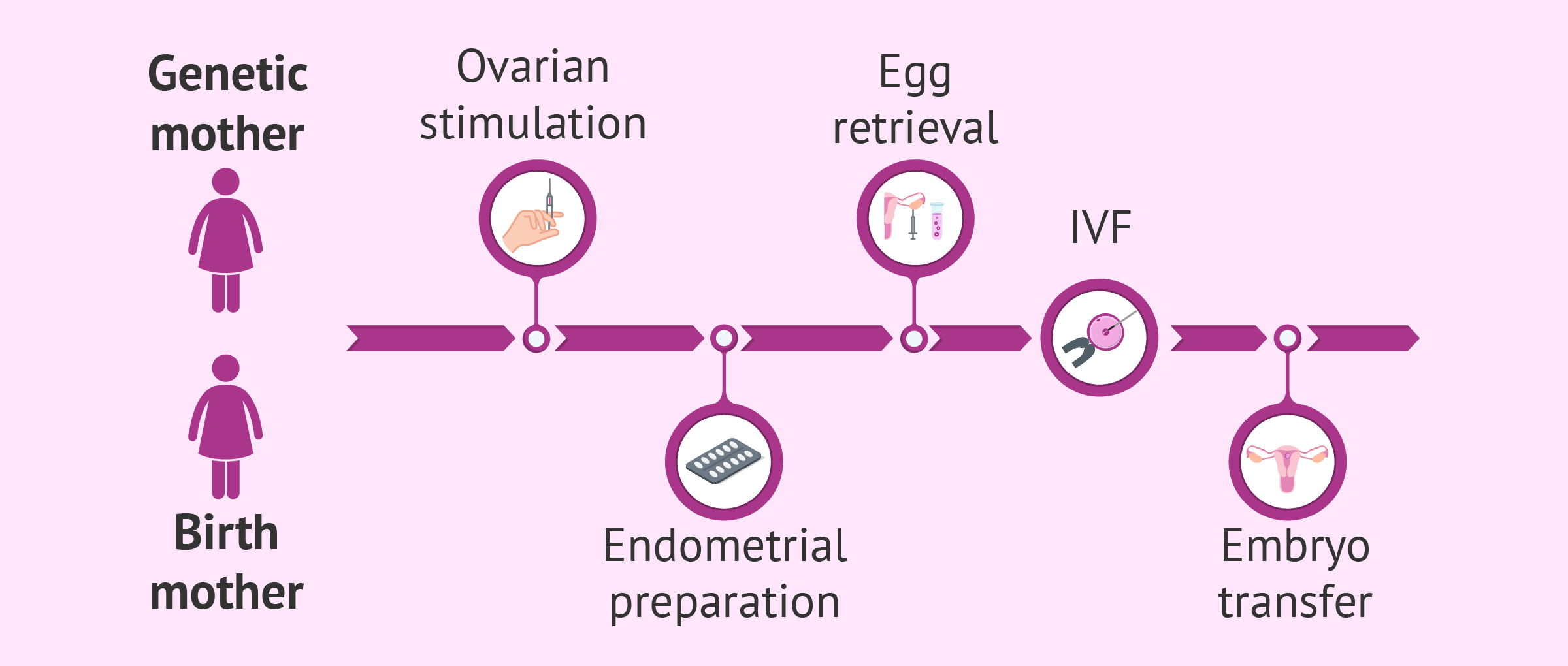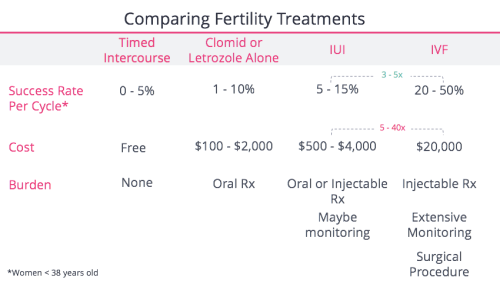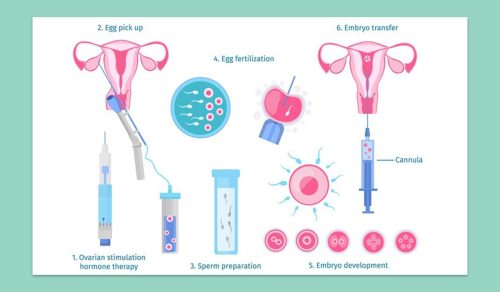What Is Reciprocal IVF? Your Complete Guide to Shared Motherhood
Imagine two people, deeply in love, dreaming of starting a family together. Now picture them both playing a starring role in bringing that dream to life—one providing the eggs, the other carrying the baby. That’s the magic of reciprocal IVF, a fertility treatment that’s opening doors for same-sex female couples and others who want to share the journey of parenthood in a unique way. If you’ve heard the term but aren’t quite sure what it means, you’re in the right place. This guide will walk you through everything you need to know about reciprocal IVF, from how it works to what it feels like, with a few surprises along the way.
Reciprocal IVF isn’t just a medical procedure—it’s a story of connection, science, and hope. Whether you’re curious about the process, wondering about costs, or just want to know if it’s right for you, we’ve got you covered. Let’s dive in and explore this incredible option that’s helping families grow in ways you might not have imagined.
How Does Reciprocal IVF Work?
Reciprocal IVF, sometimes called “shared motherhood,” is a type of in vitro fertilization (IVF) designed to let both partners in a same-sex female couple take part in creating their child. One partner donates her eggs, while the other carries the pregnancy. It’s a beautiful blend of biology and teamwork, made possible with the help of donor sperm and some pretty cool science.
Here’s the basic rundown of how it happens:
- Egg Retrieval: The partner donating the eggs goes through hormone treatments to boost egg production. Once the eggs are ready, a doctor collects them in a quick procedure.
- Fertilization: Those eggs are then mixed with donor sperm in a lab. After a few days, the healthiest embryos start to form.
- Embryo Transfer: One or two of those embryos are placed into the uterus of the partner who’ll carry the baby. If all goes well, a pregnancy begins!
It’s a bit like a relay race—one partner starts the process, and the other takes it across the finish line. The whole thing usually takes a few weeks per cycle, though it might take a couple of tries to get that positive pregnancy test.
What makes this so special? Both partners get to contribute physically to their child’s creation. The egg donor shares her DNA, while the carrying partner nurtures the baby from day one. It’s a powerful way to bond over the miracle of life.

Who Can Use Reciprocal IVF?
Reciprocal IVF isn’t just for one type of family—it’s for anyone who wants to share the parenthood experience in this unique way. Most often, it’s chosen by same-sex female couples who dream of both being biologically involved in their baby’s story. But it’s not limited to them. Here are some folks who might consider it:
- Same-Sex Female Couples: If you and your partner want to team up—one giving the eggs, the other carrying the baby—this is a perfect fit.
- Couples with Fertility Challenges: Maybe one partner can’t carry a pregnancy due to medical issues, but her eggs are healthy. The other partner steps in to carry the baby.
- Transgender or Nonbinary Individuals: For couples where one partner was assigned female at birth and has viable eggs, and the other has a uterus, reciprocal IVF can work wonders.
- Anyone Wanting a Shared Journey: Even if you don’t fit the usual mold, this option might appeal if you love the idea of both partners playing a physical role.
Real talk: not everyone qualifies right away. Doctors will check things like egg quality, uterine health, and overall wellness to make sure it’s a safe bet. Age matters too—most clinics prefer egg donors under 35 for the best chances of success, though that’s not a hard rule everywhere.
Wondering if it’s for you? Picture this: you’re sitting with your partner, imagining your future kid. Does the idea of splitting the biological roles—eggs from one, pregnancy for the other—light you up? If so, reciprocal IVF might just be your path.
The Emotional Side of Reciprocal IVF
Let’s get real—starting a family is a big deal, and reciprocal IVF adds some extra layers to the experience. It’s not just about needles and doctor visits; it’s about feelings, too. For many couples, this process is a rollercoaster of excitement, nerves, and everything in between.
Take Sarah and Jamie, a couple from Oregon. Sarah donated her eggs, and Jamie carried their son. “It felt like we were building him together,” Sarah says. “I’d watch Jamie’s belly grow, knowing part of me was in there—it was wild.” Jamie adds, “I loved feeling so connected to Sarah through the pregnancy. It was our baby in every way.”
But it’s not all smooth sailing. The hormone shots can make you cranky, and waiting for results can feel like forever. Some couples worry about who’s “more” the mom—spoiler alert: you’re both 100% parents, just in different ways. Talking it out with each other (or a counselor) can keep things steady.
Here’s a quick emotional checklist to think about:
✔️ Celebrate the Wins: Every step—eggs retrieved, embryos made, positive test—is a victory.
❌ Don’t Bottle It Up: If you’re stressed, say it. This is a team effort.
✔️ Lean on Support: Friends, family, or online groups can lift you up when it’s tough.
Studies show that couples who go through fertility treatments together often feel closer afterward. A 2023 survey from the American Society for Reproductive Medicine found that 78% of same-sex couples using reciprocal IVF reported stronger relationships post-treatment. It’s hard work, but it can bring you tighter than ever.
What Does Reciprocal IVF Cost?
Okay, let’s talk money. Reciprocal IVF isn’t cheap, but it’s not impossible either. In the U.S., one cycle typically runs between $15,000 and $25,000. That covers meds, egg retrieval, lab work, and embryo transfer. Add in donor sperm (about $500-$1,500 per vial) and maybe some extras like genetic testing, and you’re looking at a big investment.
Here’s a breakdown to give you a clearer picture:
| Expense | Cost Range | What It Covers |
|---|---|---|
| Medications | $3,000 – $7,000 | Hormones for egg production |
| Egg Retrieval | $5,000 – $8,000 | The procedure to collect eggs |
| Lab Fertilization | $2,000 – $4,000 | Mixing eggs and sperm, growing embryos |
| Embryo Transfer | $3,000 – $5,000 | Placing embryos in the uterus |
| Donor Sperm | $500 – $1,500 | Per vial, depending on the source |
| Optional Testing | $1,000 – $3,000 | Genetic screening or extra monitoring |
Costs vary by clinic and location—big cities like New York or San Francisco might charge more than smaller towns. Insurance can help, but it’s hit or miss. Some states, like California, mandate fertility coverage for same-sex couples, while others leave you on your own. Check your policy or ask your clinic about payment plans.
Here’s a pro tip: look into fertility grants. Organizations like Baby Quest or the Tinina Q. Cade Foundation offer thousands of dollars to couples in need. In 2024 alone, Baby Quest gave out over $200,000 to families pursuing IVF. It’s worth a shot to lighten the load.
Success Rates: What Are Your Chances?
You’re probably wondering, “Will this actually work?” The answer depends on a few things, like age, egg quality, and uterine health. For reciprocal IVF, success rates are similar to traditional IVF—pretty encouraging if you’re under 35.
According to the CDC’s 2023 fertility data, here’s what you might expect per cycle:
- Under 35: 50-55% chance of a live birth
- 35-37: 40-45%
- 38-40: 30-35%
- Over 40: 10-20% (drops more if using older eggs)
These numbers are for the egg donor’s age, not the carrier’s, since egg quality is the big player. If the donor’s young and healthy, your odds are solid. Clinics often tweak the process—like using two embryos instead of one—to boost chances, though that raises the twin risk (about 20-30% with double transfers).
Real-life example: Lisa and Maria, both 32, tried reciprocal IVF in 2024. Lisa’s eggs were top-notch, and Maria’s uterus was ready. First try, boom—pregnancy. “We were shocked it worked so fast,” Maria says. “But our doctor said our ages gave us a great shot.”
Want to up your odds? Eat well, skip the stress (easier said than done), and follow your doctor’s advice to the letter. Every little bit helps.
Choosing a Sperm Donor: The Fun Part
Picking a sperm donor is like online shopping, but way more personal. You’ll browse profiles with details like height, eye color, education, and even hobbies. Some couples go for a donor who looks like the non-egg-giving partner to keep that family vibe. Others pick based on personality or health history.
You’ve got two main options:
- Known Donor: A friend or family member. It’s free (minus legal fees), but it can get messy emotionally or legally.
- Sperm Bank: Anonymous or semi-anonymous donors. More expensive, but you get medical screening and no awkward Thanksgiving dinners.
A 2024 study from the journal Fertility and Sterility found that 65% of reciprocal IVF couples chose anonymous donors for peace of mind. Safety’s key—reputable banks test for diseases and genetic issues, so you’re not rolling the dice.
Here’s a mini-quiz to spark some thought:
Who’s Your Dream Donor?
- A) Tall, blue-eyed artist who loves dogs
- B) Brainy doctor with a marathon streak
- C) Someone who looks like your partner
- D) No clue, just healthy please!
No wrong answers—it’s all about what feels right for you.
The Legal Stuff You Need to Know
Parenthood’s awesome, but the law can be a buzzkill. With reciprocal IVF, you need to lock down your rights as parents, especially since donor sperm’s involved. Good news: it’s usually straightforward if you plan ahead.
- If You’re Married: In most U.S. states, both partners are automatically legal parents if the baby’s born during the marriage. Easy peasy.
- If You’re Not Married: The non-carrying partner might need to do a second-parent adoption or sign consent forms before treatment. Check your state’s rules—places like Texas or Florida can be trickier than California or New York.
- Donor Rights: Sperm donors from banks have zero legal claim to your kid. Known donors? Get a lawyer to draft an agreement, or you might face drama later.
A 2025 report from the Human Rights Campaign noted that 15 states still lag on clear parentage laws for same-sex couples. If you’re in one of those, a quick consult with a family attorney (about $200-$500) can save headaches.
Practical tip: File all paperwork before the baby arrives. It’s one less thing to stress about when you’re knee-deep in diapers.
Three Things You Haven’t Heard About Reciprocal IVF
Most articles cover the basics—how it works, costs, success rates. But there’s more to the story. Here are three angles you won’t find everywhere:
1. The Microbiome Connection
Scientists are buzzing about how the carrying partner’s gut and vaginal microbiome might affect pregnancy outcomes. A 2024 study in Nature Medicine found that a balanced microbiome could boost embryo implantation rates by up to 15%. No one’s saying it’s a game-changer yet, but eating yogurt and cutting sugar might give your embryos a tiny edge. Cool, right?
2. The “Other Mom” Bond
Lots of couples say the non-carrying partner feels a special tie to the baby because her partner’s body grew it. It’s not talked about enough, but it’s real. Think of it like this: if your spouse bakes a cake with your recipe, you’re still proud of that cake. Same vibe here—just way more emotional.
3. DIY Fertility Boosts
Clinics won’t tell you this, but some couples swear by at-home tricks between cycles. Acupuncture’s got solid backing—a 2023 meta-analysis showed it might increase IVF success by 10%. Others try red raspberry leaf tea or meditation. No hard proof, but if it keeps you sane, why not?
These nuggets add depth to the journey. They’re not the whole picture, but they’re pieces worth knowing.

Day-to-Day: What to Expect During Treatment
Ready to peek behind the curtain? Here’s what a reciprocal IVF cycle feels like, step by step.
For the Egg Donor
- Weeks 1-2: Shots, shots, shots. You’ll inject hormones daily to grow those eggs. Side effects? Maybe bloating or mood swings—think PMS on steroids.
- Day 12-14: Egg retrieval day! You’re sedated, so it’s painless, but you’ll nap it off after.
- Recovery: A day or two of rest, then you’re back to normal.
For the Carrier
- Prep Time: You’ll take meds to prep your uterus—pills or patches, not too bad.
- Transfer Day: A quick procedure (no sedation needed) to place the embryo. Like a fancy Pap smear.
- The Wait: Two weeks of nail-biting until the pregnancy test. Stay busy—it helps.
Couples say the teamwork makes it fun. You’re in it together, cheering each other on. Stock up on snacks and Netflix for the downtime.
Pros and Cons of Reciprocal IVF
Every big choice has ups and downs. Here’s the scoop on reciprocal IVF:
Pros
✔️ Shared Experience: Both partners get to be part of the action.
✔️ Biological Bond: The baby’s tied to both of you in a cool way.
✔️ Flexibility: Works around fertility hiccups like low egg count or uterine issues.
Cons
❌ Cost: It’s a chunk of change, no denying it.
❌ Time: Multiple cycles can stretch things out.
❌ Physical Toll: Hormones and procedures aren’t a picnic for everyone.
Weigh these with your partner. For many, the pros outweigh the cons by a mile—especially when that baby’s in your arms.
How to Get Started
Feeling ready? Here’s your game plan:
- Find a Clinic: Look for one with LGBTQ+ experience. Check reviews or ask for recommendations.
- Book a Consult: Most offer free first visits. Bring questions—lots of them.
- Test the Waters: Both partners get bloodwork and scans to see if you’re good to go.
- Plan the Cash: Save up, apply for grants, or explore loans.
- Jump In: Sign the papers, pick your donor, and start the cycle.
Quick poll: What’s your next step?
- A) Call a clinic today
- B) Talk it over with my partner
- C) Research more online
- D) Save up first
Wherever you’re at, you’re on the right track just by reading this.
Real Stories: Couples Who’ve Been There
Nothing beats hearing it from the source. Meet two couples who’ve walked the reciprocal IVF path:
Emily and Tara, California
Emily donated eggs at 29, and Tara carried their daughter at 31. “We wanted to feel equal in it,” Emily says. “The best part was seeing Tara glow, knowing I helped make that happen.” It took two cycles ($40,000 total), but they’d do it again “in a heartbeat.”
Alex and Sam, Texas
Alex, 34, carried twins from Sam’s 33-year-old eggs. “The legal stuff was a hassle here,” Sam admits, “but holding our boys made it worth it.” They used a grant to cut costs and leaned on a support group when things got tough.
These stories show it’s not just science—it’s love, grit, and a little luck.
The Future of Reciprocal IVF
What’s next for this treatment? Science is moving fast. Researchers are testing ways to freeze eggs better, tweak embryos for higher success, and even use AI to pick the best ones. A 2025 trial from Stanford hinted that gene editing could one day fix tiny egg flaws, though that’s years off.
For now, reciprocal IVF is getting more popular. Google Trends shows searches for “shared motherhood IVF” up 30% since 2023, especially in states like New York and Illinois. On X, couples are buzzing about it too, sharing tips and cheering each other on.
It’s not just a trend—it’s a movement. And it’s growing families in ways that feel fresh and full of heart.
Your Turn: Making It Personal
Reciprocal IVF is more than a procedure—it’s a choice to build something together. Maybe you’re picturing your partner’s smile at the first ultrasound, or maybe you’re just curious about the possibilities. Either way, it’s a big, beautiful step.
Here’s a final checklist to ponder:
✔️ Do we both want to be part of the process?
✔️ Can we handle the costs (or find help)?
✔️ Are we ready for the ups and downs?
If you’re nodding yes, you’re already halfway there. Talk to your partner, call a clinic, or just dream a little bigger tonight. This could be your story—and it’s going to be a good one.




